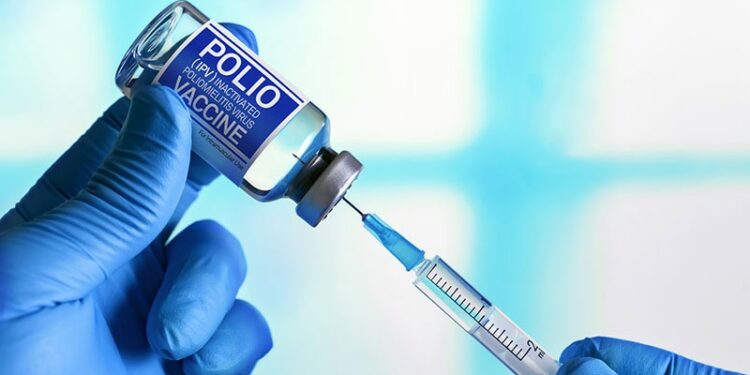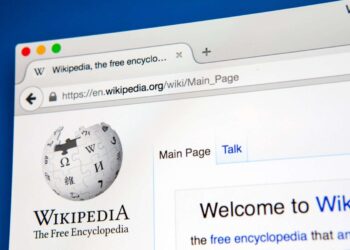[ad_1]
Vaccine-derived poliovirus type 2 was detected in wastewater systems between September and December 2024 in five European countries: Spain, Poland, Germany, the United Kingdom, and Finland, potentially putting undervaccinated people at risk, according to a Eurosurveillance report.
Analyses have revealed wide genetic variation among the samples between and within countries, and even within the same sampling sites. This finding suggests that multiple independent importations occurred almost simultaneously from outside European poliovirus surveillance networks.
While the five countries reporting the virus maintain high immunization coverage, with three doses of the inactivated poliovirus vaccine (IPV), subnational coverage of the third dose of the polio vaccine in 2023 ranged between 43% and over 99%, according to Eurosurveillance. This finding means that some populations are chronically undervaccinated and vulnerable to poliovirus infection.
Increased Vigilance Urged
“To date, no polio cases have been reported, and the EU/EEA continues to be polio-free, but such findings call for increased vigilance,” a European Centre for Disease Control (ECDC) spokesperson told Medscape Medical News.
“The overall risk among vaccinated populations is assessed to be very low, irrespective of the extent of vaccination coverage. The overall risk among under or unvaccinated populations is assessed to be low in areas with high vaccination coverage and moderate in areas with low vaccination coverage,” the spokesperson said.
Nonvaccinated or undervaccinated persons may develop polio upon infection with a pathogenic poliovirus, overall in about 1:200 to 1:3000 infections, Erwin Duizer, PhD, head of the Netherlands’ National Polio Laboratory, Bilthoven, the Netherlands, told Medscape Medical News.
Poliovirus detections in environmental surveillance indicate that the poliovirus is present in the population that drains on the sewage water treatment plant being screened, and that labs are doing a great job in detecting these viruses, he noted.
However, environmental surveillance cannot distinguish between viruses excreted by vaccinated and unvaccinated persons, nor between residents and visitors, he cautioned.
Nevertheless, like the ECDC spokesperson, he said, “The risk for polio is not necessarily significant or high, since most people are vaccinated, and a vaccinated person will not develop polio upon infection.”
But Soile Blomqvist, PhD, senior researcher at the Finnish Institute for Health Welfare, Helsinki, Finland, told Medscape Medical News that the wastewater findings were “concerning.”
“Presence of poliovirus in wastewater signals a potential risk for transmission,” she said. “This is particularly concerning, as the virus can spread silently through asymptomatic individuals.” Around 70% of individuals infected with poliovirus are asymptomatic, whereas 25% experience mild symptoms, she noted.
Thea Kølsen Fischer, MD, clinical professor of public health at the University of Copenhagen, Copenhagen, Denmark, agreed. “Silent poliovirus transmission can persist for months or years before new paralytic polio cases emerge,” she told Medscape Medical News. “This depends on vaccination rates and the behavior of asymptomatic carriers.”
An additional risk may include frequent contact with persons from, or who travel to, countries with polio outbreaks, Duizer added.
Children at Greatest Risk
Children younger than 5 years have the highest risk for infection, although Medscape Medical News.
The ECDC estimated that between 2012 and 2021, around 2.4 million children between ages 12 months and 23 months may have not received the required three doses of IPV. An additional 600,000 children in 2022 and 2023 also may have missed out on vaccines. However, anyone at any age who is not fully vaccinated is at risk for the disease, said Huseynov.
The ECDC spokesperson added, “Pockets of underimmunized or partially immunized populations have built over time due to multiple factors, ranging from hesitancy towards the vaccine (or specific vaccines contained in the combination vaccines usually administered), complacency towards the risks of contracting polio in the EU, as well as potential barriers in accessing the vaccine.”
Reducing Polio Risk
“The most important polio control measure is strengthening vaccination programs by ensuring high routine immunization coverage with IPV,” Blomqvist said. “All children should receive the full series of polio vaccinations, and travel vaccination requirements for visitors to/from polio-endemic regions should align with international health regulations recommendations.”
“Additionally, intensive surveillance is essential, including wastewater monitoring to detect silent transmission and rapid detection and investigation of suspected acute flaccid paralysis cases,” she said.
Duizer noted that although the IPV used in Europe greatly reduces oral transmission of the virus, it does not affect the fecal-oral transmission route. He therefore recommended hand washing with soap and water (not ethanol products, which are not effective against nonenveloped viruses) after any contact with stool and before preparing food. Other pointers include flushing the toilet with the lid closed after defecating to prevent contamination from aerosol clouds, and frequent cleaning of toilet areas.
Fischer and Duizer reported having no relevant financial relationships.
Annie Lennon is a medical journalist. Her writing appears on Medscape, Medical News Today, and Psych Central, among other outlets.
[ad_2]
Source link : https://www.medscape.com/viewarticle/polio-virus-detected-europe-cause-concern-2025a10003ii?src=rss
Author :
Publish date : 2025-02-11 11:12:12
Copyright for syndicated content belongs to the linked Source.














